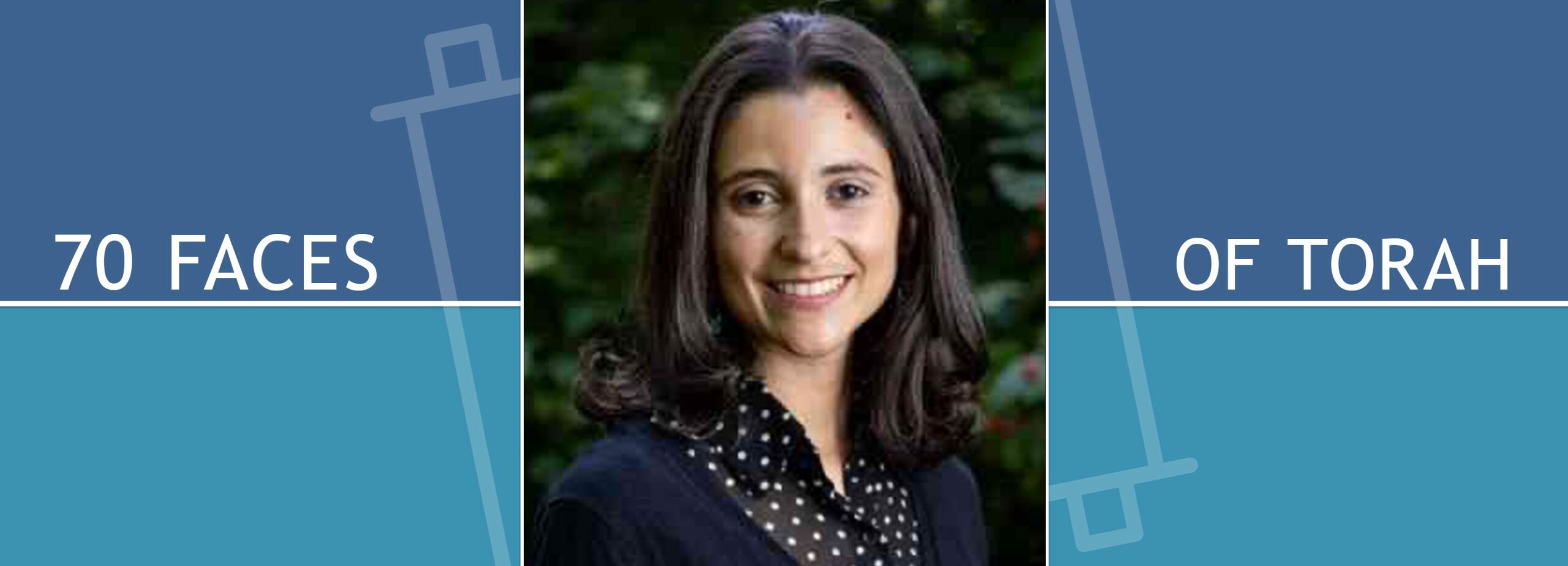Deuteronomy A Yearning of the Heart

Parashat Vaetchanan Deuteronomy 3:23-7:11
Standing in line at the CVS pharmacy I pick up a diary from the spinning rack. The spiral-bound notebook calls itself The Prayer Map for Women: A Creative Journal. Each page presents a spread of fill-in-the-blank boxes with lines headed by prompts: “Dear Heavenly Father…” it opens,“Thank you for..” “Here’s what’s happening in my life…” “I need…” “People I am praying for today…” The prayer’s conclusion is written for you: “Amen. Thank you father for hearing my prayers.” The prompts are simple and the graphics don’t particularly inspire gravity or holiness, but still I feel moved.
The truth is, we all need help learning to pray. We find a much more ancient version of a prayer map in the Talmud, in Tractate Berachot. There our sages turn to two biblical figures: Chana, who pleads with God for a child, and Moses, who pleads with God to enter the land of Israel. From these models we learn more than just structure and language; we learn the essence of what it means to pray. Prayer is a yearning of the heart.
The rabbis of the Talmud (Brachot 30b) teach us that real prayer emerges only when our hearts plead with God. And what if they don’t? We read of Rabbi Hiyya bar Abba, who prayed and then immediately prayed again. Rav Zeira watches him in confusion and wonders why. Is it possible that he felt so unfocused in his prayers that he decided to try again? He imagines the rabbi reaching the end of the prescribed texts with a sense that the prayer didn’t quite work, didn’t count, wasn’t focused enough. And so he immediately begins again.
I relate to this image of Rabbi Hiyya bar Abba. Especially this year, when my prayers feel so urgent and desperate. I know how it feels to finish a prayer with the desire to just dive right back into the beginning. Like Rabbi Hiyya bar Abba, I feel compelled by the idea of praying over and over until I know for certain that these prayers have been received, that my heart was fully focused. The feeling echoes other critical moments in my past when praying felt like ringing an alarm bell to call God’s attention to something or someone. I might also have ended an amidah prayer with a sinking suspicion that it didn’t work, that I must try again. Perhaps if I just pray again, but with more kavannah, more focus, then God will hear me.
But the Talmud is quick to tell Rav Zeira that it doesn’t work that way. Even when we are halachically required to recite the amidah over again because of a mistake or a missed addition, we cannot pray the amidah back to back without some break. “How much time must we leave between the prayers?” the Talmud asks and offers two answers:
כַּמָּה יִשְׁהֶה בֵּין תְּפִלָּה לִתְפִלָּה? רַב הוּנָא וְרַב חִסְדָּא. חַד אָמַר: כְּדֵי שֶׁתִּתְחוֹנֵן דַּעְתּוֹ עָלָיו, וְחַד אָמַר: כְּדֵי שֶׁתִּתְחוֹלֵל דַּעְתּוֹ עָלָיו.
How long should one wait between [the first] prayer and [the second] prayer? Rav Huna and Rav Ḥisda: One said [wait long enough] so that his mind will be pleading [titḥonen]. The other said: [Long enough] so that his mind will be beseeching [titḥolel].
Prayer is pleading. Prayer is beseeching. We learn both from Moses. This week’s parashah is called Vaetchanan, I pleaded. The first verses are perhaps one of our most intimate looks into Moses’s heart as he tells the people “I pleaded with God at that time saying…” And then Moses shares with us the words of his prayer (Deut 3:24-25):
“O Lord God, You who let Your servant see the first works of Your greatness and Your mighty hand, You whose powerful deeds no god in heaven or on earth can equal! Let me, I pray, cross over and see the good land on the other side of the Jordan, that good hill country, and the Lebanon.”
Like the drug store prayer map, we can use Moses’s words as a guide, offering us both structure and wisdom on how to pray. Speak to God directly. Lead with reverence and praise. Compliment and express gratitude. And then, make your request honestly and earnestly. Speak personally. Open your heart and plead with God to answer your prayer. Be specific. Ask for exactly what you need.
Moses’s prayer is our model. And guess what? God answers him. God says no. Moses doesn’t get what he wants most, despite his perfect prayer form. Instead, God offers him guidance on how to move forward nonetheless. God tells Moses to look out at the land, to appreciate the parts of the dream he can already access. And then God instructs him to train Joshua, ensuring that the progress made won’t die with him.
My prayer this week is not exactly that of Moses. But I too pray about that stretch of land “b’ever ha Yarden,” by the Jordan River and Lebanon. I pray for goodness and for peace. I pray with my full heart. I can’t accept no for an answer.
Rabbi Avi Killip ’14 is the Executive Vice President at Hadar. A graduate of Hebrew College Rabbinical School and a member of the Hebrew College Board of Trustees, Avi also holds Bachelors and Masters from Brandeis University. She was a Wexner Graduate Fellow and a Schusterman Fellow. Avi teaches as part of Hadar’s Faculty and is host of the Responsa Radio podcast. Avi lives in Riverdale, NY with her husband and three young children.
Learn more about Hebrew College’s rabbinical program at Ta Sh’ma (Come & Hear), our prospective student Open Houses (in-person November 18 & virtual December December 8).


